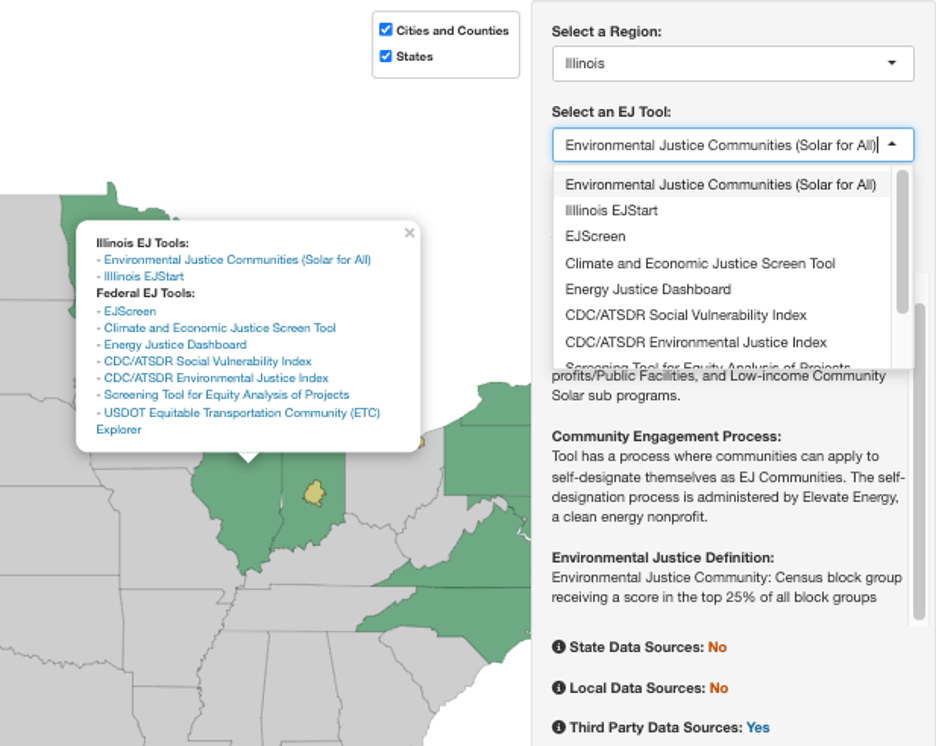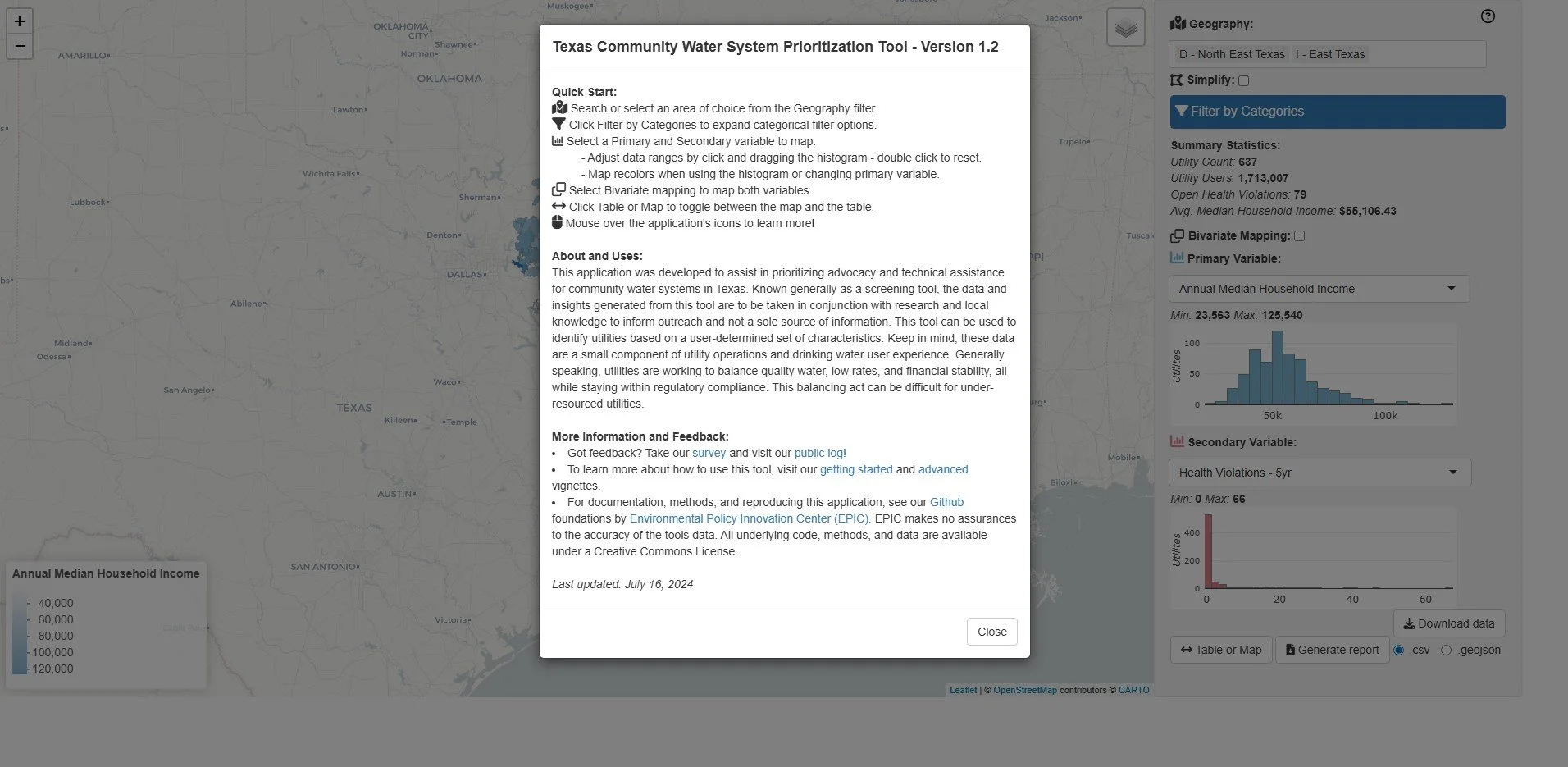
Actionable and Accessible Data
Resources and Tools for Protecting Our Environment and Public Health
We improve data accessibility and the ability to make decisions for identifying and protecting overburdened communities. We are committed to building lasting forms of protection from environmental burdens and to help build future climate resilience.
Did You Know?
What Drives Us
Data can support and accelerate environmental justice work by validating the disproportionate harms that some communities suffer because they lack clean air, access to safe drinking water and green spaces, and protections from environmental hazards and pollution. Data provides evidence for people’s lived experiences, which is often called their “ground-truth.” It is a way to connect potentially harmful impacts to human health to these environmental burdens.
We support initiatives to empower community engagement and government action through the use of best-available data to overcome issues of environmental injustice.
Our Way Forward
Many environmental and climate justice communities go unrecognized—and thus, unprotected. We ground our work these key workstreams:
-
Advocating for the development of policies and tools that can (1) inform where projects are being considered for permits, (2) identify the discrete and cumulative environmental harms associated with those projects, and (3) support overburdened communities with technical assistance and resources to receive government investments to mitigate or address environmental burdens.
-
Advancing the creation of a robust digital infrastructure and availability of accessible data to track infrastructure funding at the federal, state, and local levels and follow these investments from grant applications to constructed projects so we can better understand if these investments are reaching and reducing future harms in communities.
-
Designing tools that help people across the nation better understand their drinking water, protect their wetlands, prepare for wildfires, and take actions in their communities to reduce harms from environmental burdens.
Our Principles
Our Projects








